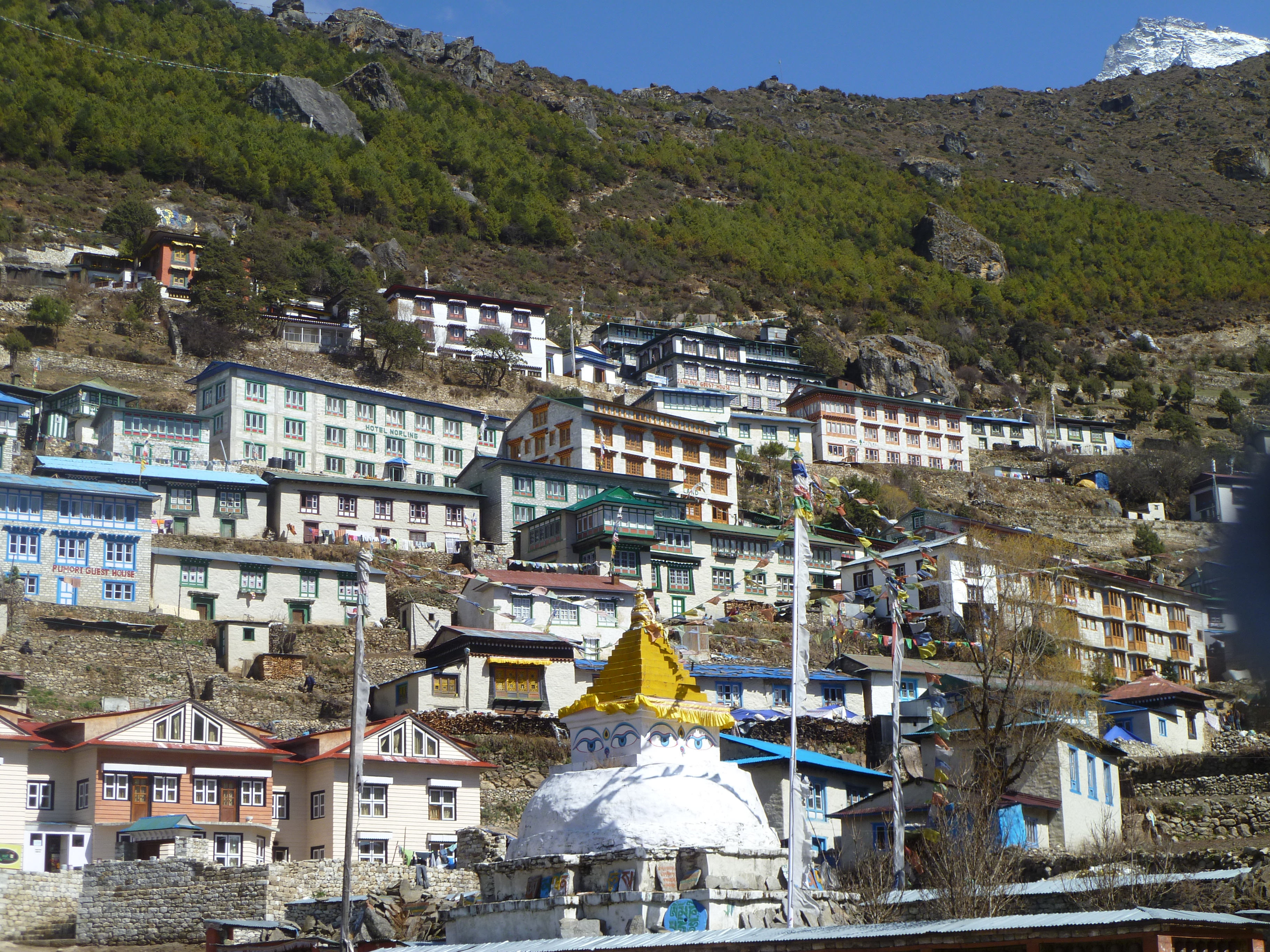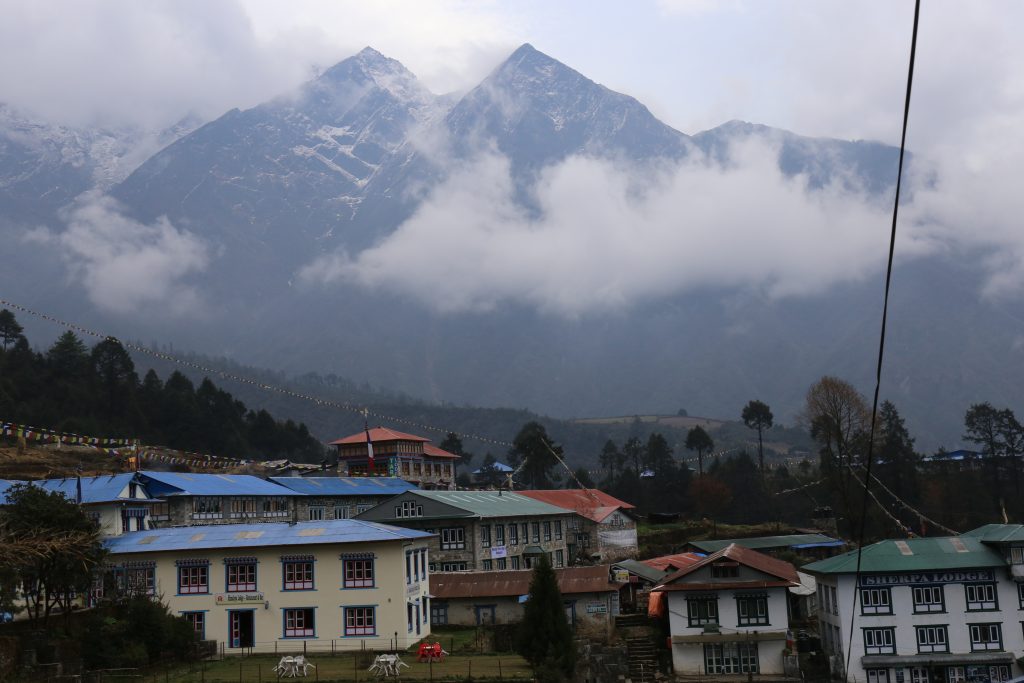Trekking is and adventure activity that involves walking along the designated trails for 4-7 hours in average for the sake of relaxation. The walking hours highly depends upon the fitness level of person to person as well as the trekking route. Trekking in Nepal is mostly carried out in the Himalayan Region adoring the breathtaking Himalayan views alongside admiring the unique culture and traditions of the people living in the area. Trekking in the Himalayan region of Nepal can be carried out in different styles depending upon ones’ interest area chosen and available facilities. Amongst all, Tea House Trekking is the most popular style of trekking in which one will be hiking to the destination of the day and resting at the available tea house with inclusive of consuming the meals at the same lodge. The routes which are well developed for trekking consists of sufficient numbers of Tea- Houses to choose from which makes trekking cheaper as camping is not required.
Things that might be helpful while on Tea House Trek:
- What is a Tea House Trek?
Tea House trek are basically small hotels or the lodges that are established alongside the trekking trails which are generally owned by the people living in the area. The family owned business is sustained by providing the lodging and meals facilities to the trekkers. Some of the popular trekking routes are served by lodges making it possible for you to stay at local Tea house. Tea house treks are less expensive then Camping trek and are largely suitable for small group. This style of the trekking allows you to know more about the daily lifestyle of the local people in rural Nepal.
Tea Houses during trekking
- Accommodation Facilities at Tea House
Accommodation in the Tea houses are quite basic. Generally the rooms are on shared basis where you will have to share the room with the fellow trekker. The rooms are generally small consisting of 2 beds, mattress, pillows and blankets. However, the cleanliness might not live up to your expectations. In such a case, you can bring a thin sheet to place between yourself and blanket. The tea houses can be basic to luxury depending upon the areas. The toilets might also be on shared basis. Teahouses in the Everest and Annapurna region are well managed with the facility of attached bathrooms. Usually during busy seasons if private rooms in smaller villages are fully occupied you might have to sleep in dormitory.
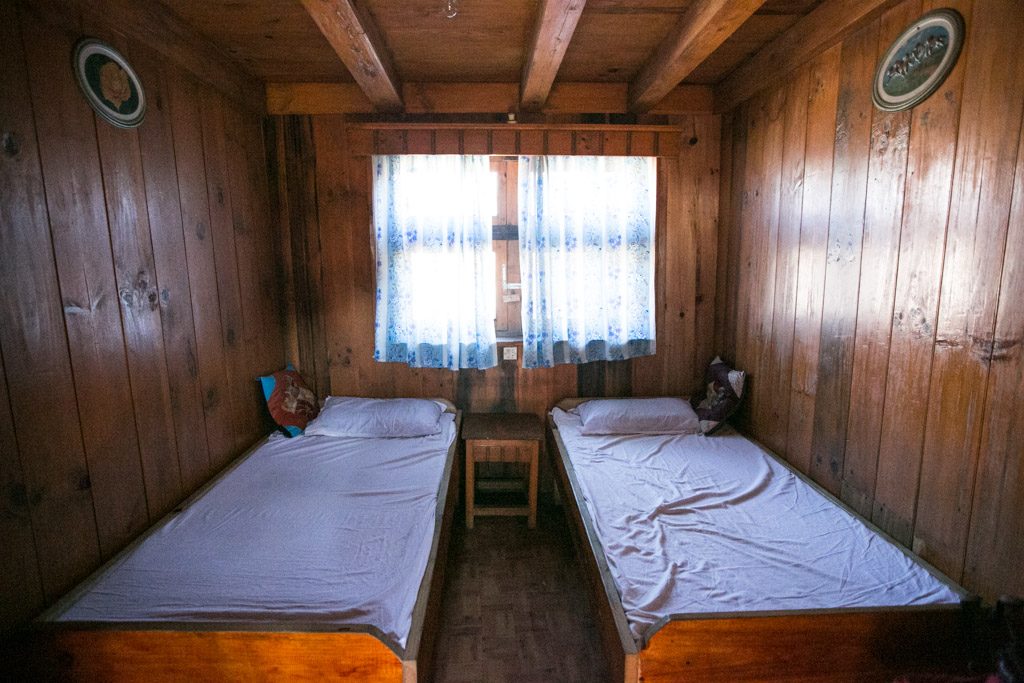 Bed Arrangements at Lodges during tea House Trek
Bed Arrangements at Lodges during tea House Trek
- Foods in the Tea Houses.
The tea houses offer different varieties of foods. The routes that are popular and developed serve different types of foods from bakery to international dishes and of course Nepalese food. Everyone eats in a common dining room, which normally houses a wood fire. Standard breakfast, lunch and three course dinner, tea or coffee will also be included with each meal. During breakfast, tea is served with pancakes, porridge, egg items, bread, or some varieties of the above. Meals includes dal bhat, soup, momos and other rice and noodle based dishes are served depending upon the lodge menu. Your guide will help with menu selection and ensure that you get the best value meals possible. Although the food is usually plentiful and delicious, you should be aware that the menu is not normally extensive.
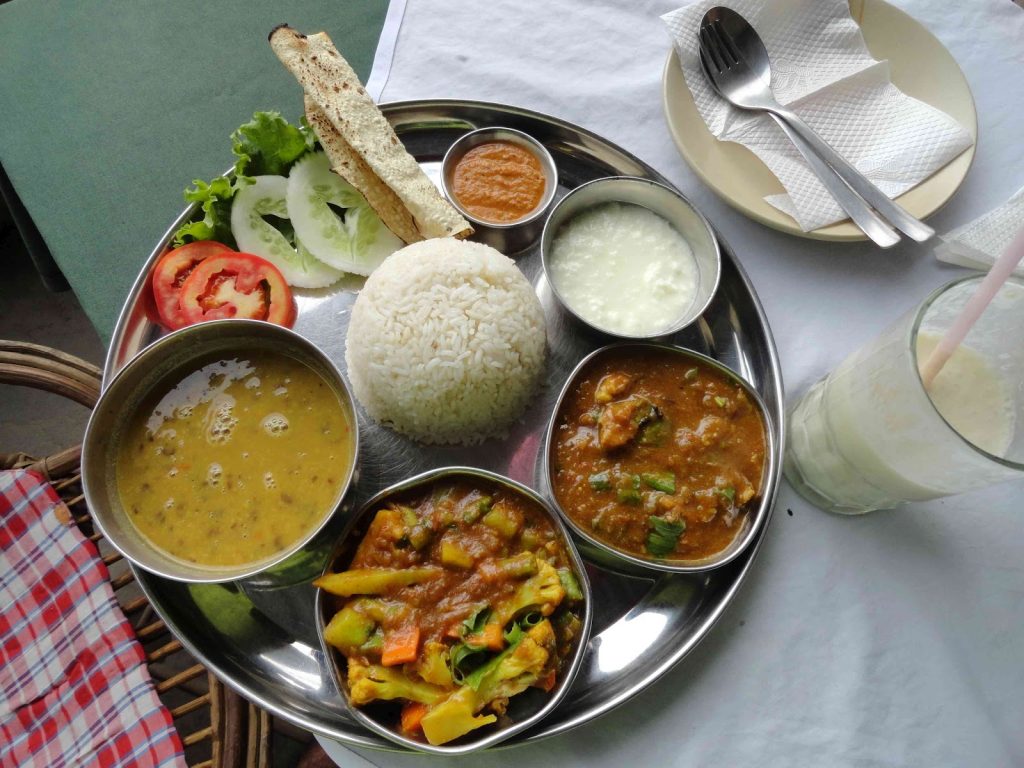 Basic Meal "Dal Bhat" served during Tea House Trek
Basic Meal "Dal Bhat" served during Tea House Trek
- Refreshment break during trekking
During the long hours of trekking, trekkers can take a short break and sneak into the available tea house for tea and some light snacks. Avoiding the strenuous walking, you can spare some time enjoying tea and adoring the wonders around yourself.
- In case, Tea House not available
There are many trekking routes available in Nepal that are in the remote regions. Some areas are not well developed as such tea houses might not be available. In the areas where tea houses are not available you will option for the camping trek.
Even during the high season, lodges might me on full occupancy and hence, you might have to camp in the garden of the hotel premises.
C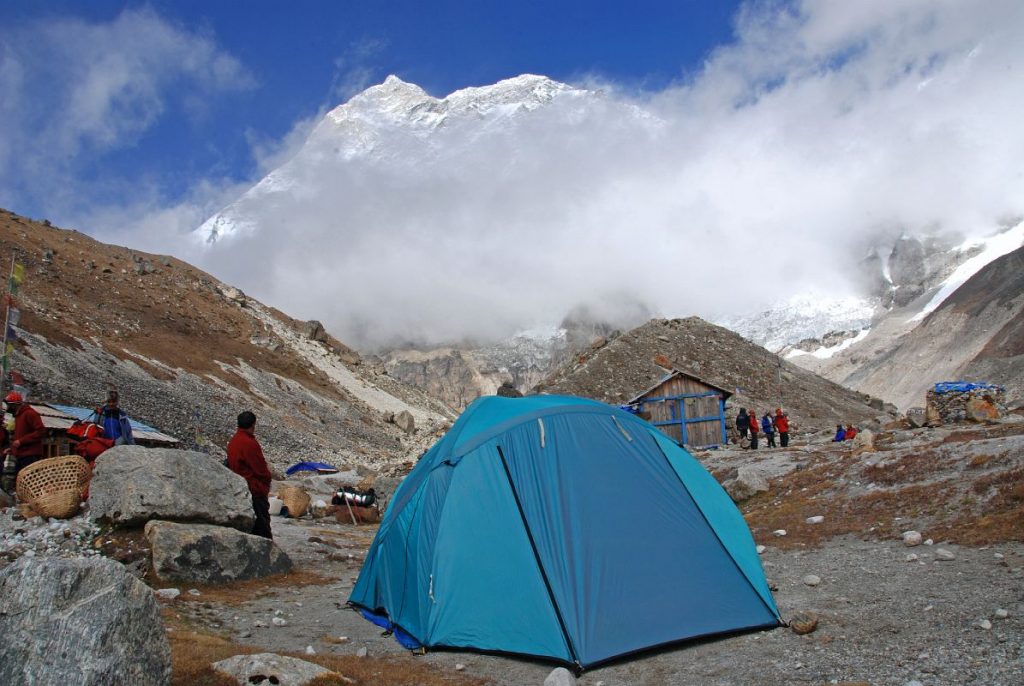 Camping Trek
Camping Trek
- Electricity and other facility at Tea House
Normally the lodges in the developed trekking route have electricity supply. Electricity in Nepal is 220-240 volts, alternating at 50 cycles per second. A voltage converter is needed for a device that does not accept 220-240 volts at 50 MHz. Sockets in Nepal accept only round three or two pins. So if your electrical device uses flat pins, we would suggest you to kindly bring a universal electric plug adapter. Some lodges might take some minimal charge for charging your equipment’s.
The lodges normally provide cold showers to the trekkers. One can even ask for the hot showers if required to the lodge owner for which some extra charge might be applicable.

